SOUTHWESTRETORT
SEVENTY-FIFTH YEAR
January 2023
Published for the advancement of Chemists, Chemical Engineers and Chemistry in this area published by The Dallas-Fort Worth Section, with the cooperation of five other local sections of the American Chemical Society in the Southwest Region.
Vol. 75(5) January 2023
Editorial and Business Offices: Contact the Editor for subscription and advertisement information.
Editor: Connie Hendrickson: retort@acsdfw.org Copy and Layout Editor: Lance Hughes: hugla64@gmail.com Business Manager: Martha Gilchrist: Martha.Gilchrist@tccd.edu
The Southwest Retort is published monthly, September through May, by the Dallas-Ft. Worth Section of the American Chemical Society, Inc., for the ACS Sections of the Southwest Region.


January 2023 The Southwest RETORT 1





January 2023 The Southwest RETORT 2 ContacttheDFWSection General: info@acsdfw.org Education: ncw@acsdfw.org Elections: candidates@acsdfw.org Facebook: DFWACS Twitter: acsdfw TABLE OF CONTENTS ARTICLES and COLUMNS Letter from the Editor…..…..……..............18 NEWS SHORTS Another step toward an insulin tablet……..5 Recent advances in beverage research …....6 Easy way to spin nanofibers, inspired by silkworms (video) …………..…….………...7 Blue light might be bad for humans but good for mangoes…………...….………... .10 A deep red, cranberry-tinted lipstick that’s also antimicrobial………….………….…...14 Meteorites plus gamma rays could have given Earth the building blocks for life……...15 AROUND THE AREA Tarleton State University………….……...16 UT Dallas…………………………………..16 EVENTS 2022 Southwest Regional Meeting……..….8 2023 Meeting in Miniature ……....…….....11 Austin Symposium………………………...13 INDEX OF ADVERTISERS Huffman Laboratories……………..…........3 TMJ Data Entry and Editing.………......…3 ANA-LAB…………………………...….…..4


January 2023 The Southwest RETORT 3 SERVICES andANNOUNCEMENTS TMJ Data Entry and Editing Specializes in: • Company newsletters • Confidential Data Entry • Free Quotes Contact Lance at hugla64@gmail.com Or 214-356-9002 2022 DFW Section Officers Chair: Mihaela C. Stefan Chair-elect: Rajani Srinivasan Past Chair: Trey Putnam Treasurer: Martha Gilchrist Secretary: Violeta Vega Gomez Councilors: MaryAnderson Kirby Drake Linda SchultzR Rebecca Weber Alternate Councilors: Michael Bigwood Daniela Hutanu Danny Tran

January 2023 The Southwest RETORT 4
“
From the ACS Press Room
Another step toward an insulin tablet
Micromotor Based Mini-Tablet for Oral Delivery of Insulin”
ACS Nano
For the millions of people living with diabetes, insulin is a life-saving drug. Unlike many other medicines, though, insulin cannot be easily delivered by swallowing a pill it needs to be injected under the skin with a syringe or pump. Researchers have been making steps toward an insulin pill, and now, a team reports in ACS Nano that they’ve delivered insulin to the colons of rats using an orally administered tablet powered by chemical “micromotors.”
Patients with diabetes have trouble regulating their blood glucose levels because they produce little or no insulin. Synthetic insulin has existed for over a hundred years, but it is often administered with an injection or an implanted pump. People affected by diabetes often take insulin multiple times per day, so frequent injections can be painful, and as a result, some patients do not take the recommended dose at the correct times.
An oral form of the drug would be ideal, but the harsh environment of the stomach breaks down and neutralizes the hormone before it can be absorbed by the intestines and get into the bloodstream. Previous attempts at oral administration protected the hormone from stomach acids with micro- or nanocarriers but relied on insulin to passively diffuse into the cells that line the colon, which isn’t very efficient. A better approach could be actively
moving the medicine around the body instead, such as with a recently reported robocapsule that delivers its cargo by drilling itself into the thick, mucosal layer of the small intestine. Yingfeng Tu, Fei Peng, Kun Liu and colleagues wanted to achieve a similar effect with their an insulin-loaded minitablets, which featured tiny, chemical “micromotors” that could deliver insulin to the colon safely and effectively.

To make these tablets, the researchers covered magnesium microparticles with a layer
Chemical “micromotors,” as illustrated here, can effectively deliver insulin in rats without an injection.
Adapted from ACS Nano, 2022, DOI: 10.1021/ acsnano.2c07953
of an insulin-containing solution and a layer of liposomes. They then mixed these particles with baking soda, pressed them into mini-tablets that were about 3 mm long then covered them with an esterified starch solution. The starch protected the tablets from stomach acid, allowing them to reach the colon intact. As they broke down, the magnesium microparticles reacted with water to generate a stream of hydrogen gas bubbles, which acted as micromotors that propelled
January 2023 The Southwest RETORT 5
Continued on page 17
From the ACS Press Room
Recent advances in beverage research
In the U.S., we’re deep in the winter season a time when many people get sick and feel “under the weather.” To feel better, some people drink antioxidant-containing beverages, such as beetroot juice or elderflower teas, while others might sip whiskey or splash it into hot toddies. Below are recent papers published in ACS journals that report insights into compounds that contribute to the health benefits and aromas of these beverages. .
“Impact of the Anodic and Cathodic Electro-Activation Treatment on the PhysicoChemical and Antioxidant Capacity of Red Beetroot Juice”
ACS Omega Nov. 8, 2022
The red beet’s bright, vibrant color comes from phenolic compounds and betalains, which also possess antioxidant properties. When these root vegetables are juiced, the resulting drink can have an unpleasant soil-like smell. Previously, heat treatments helped make it smell more palatable, but they reduced the healthful properties. This research team showed that treating beetroot juice with electricity, specifically electro-activation by an anode, produced a more stable juice while maintaining its color and enhancing its antioxidant activity.

“Profiling Selected Volatiles in Whiskey by Fizzy Extraction Time-of-Flight Mass Spec-
trometry: Correlation with Perceived Quality and Age” ACS Food Science & Technology Oct. 10, 2022
Pouring whiskey into a glass releases its scent into the air, which contributes to the flavor of the liquor. Here, a team developed an approach using microbubbles to trap these volatile compounds a process called fizzy extraction and then identified them by mass spectrometry. They tested the technique and quickly analyzed 40 whiskeys from distilleries around the world, finding that ethyl propionate and ethyl butanoate could help determine a bottle’s overall quality.
“Headspace Volatile Organic and Phenolic Compounds in Elderflowers and Elderflower Teas of Blue Elderberry (Sambucus nigra ssp. cerulea)”
ACS Food Science & Technology Sept. 13, 2022
Most commercial elderberry flower teas and syrups are made from European plants. But the blue elderberry, a subspecies native to western North America, is starting to be considered for similar drinks. Now, for the first time, researchers have identified the blue elderberry flower’s scent and phenolic compounds. These compounds could be used to make products with unique aromas and different antioxidant compositions compared to products made with European elderflowers, the researchers say.

January 2023 The Southwest RETORT 6
From the ACS Press Room
Easy way to spin nanofibers, inspired by silkworms (video)

“Biomimetic Microadhesion Guided Instant Spinning”
Nano Letters
Did you know that silk fabric is made from … well, worm spit? The way that silkworms wind their cocoons from fibers in their slimy saliva is now helping scientists more easily make new biomedical materials. Researchers reporting in ACS’ Nano Letters have mimicked the seemingly simple head bobbing of silkworms to create more consistent microand nanofibers with less equipment than other approaches.
VIDEO: https://www.youtube.com/ watch?v=XmL2ZF8QvnY
Nanofibers have become an increasingly attractive material for a variety of applications, including wound dressings and flexible electronics. But producing the fibers isn’t always easy, especially because they’re only a few nanometers thick that’s a few thousand times thinner than the width of a human hair. Most recently developed nanofiber spinning methods are complicated or slow, or they produce clumpy fibers. However, one “scientist” that seems to have solved the problem is the silkworm. This wriggly critter secretes a two-protein solution in its saliva that it continuously pulls into a long, skinny silk thread. The worm then sticks and pulls this single strand repeatedly until it’s wrapped in a silk cocoon, which people unwind to weave into silk textiles. So, Yu
Wang, Wei Yang, Xuewei Fu and colleagues wanted to design a nanofiber spinning method inspired by the silkworm that could produce continuous, uniform filaments in a quick and easy way with minimal equipment.
To create the threads, the researchers poked an array of tiny microneedles into a piece of foam soaked with a poly(ethylene oxide) solution, then pulled the needles away in a process called microadhesion-guided (MAG) spinning. Different types of filaments were created by mimicking the way silkworms move their heads when making silk: Pulling straight back resulted in ordered, oriented fibers; swaying or vibrating created crosslinked fibers; and turning the needle array produced a twisted, “all-inone” fiber. Additionally, these threads didn’t wad together, which could occur in previously developed methods.
An even more simplified version of MAG spinning didn’t require microneedles. In this case, the foam’s natural roughness acted as the microneedle adhesion points. The researchers simply soaked two pieces of foam with the polymer solution and pulled them apart, easily and instantly spinning threads between them. Using this strategy, they pulled the strands and placed them directly
January 2023 The Southwest RETORT 7
Continued on page 17
2022 Southwest Regional



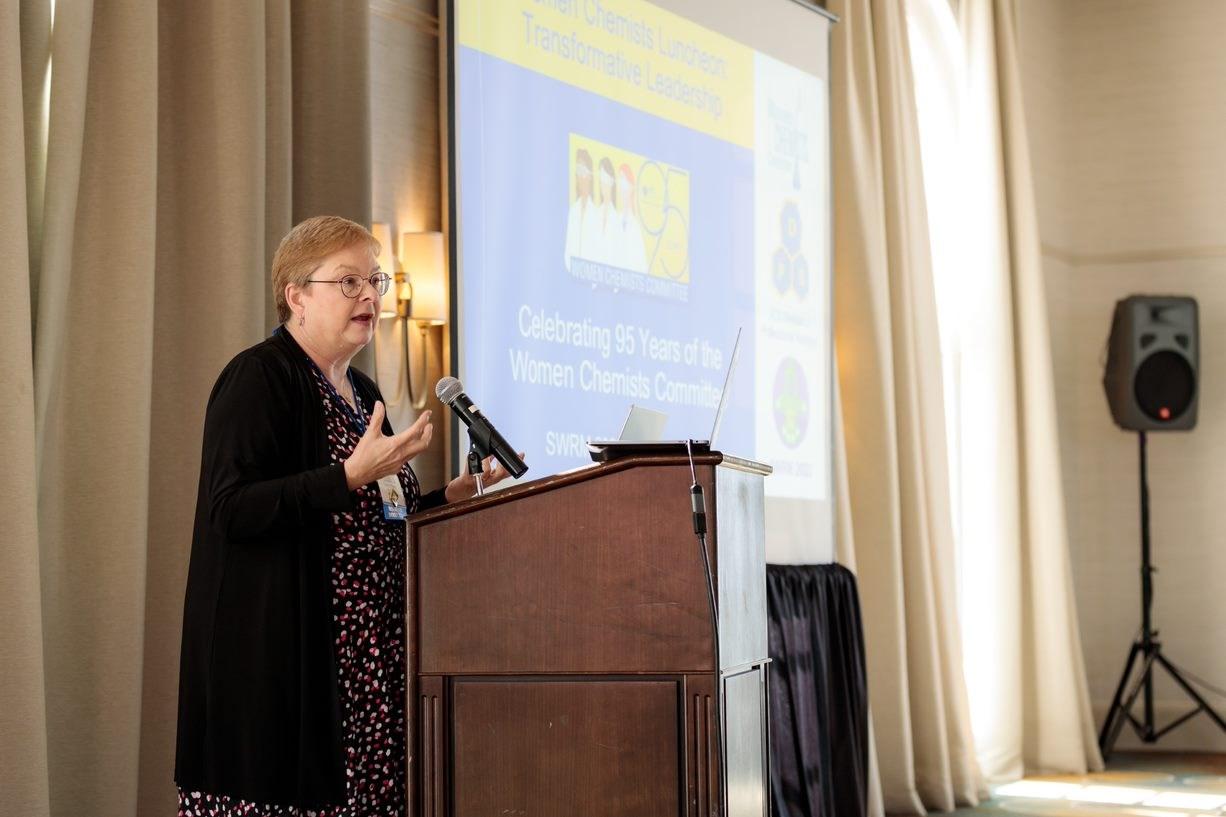

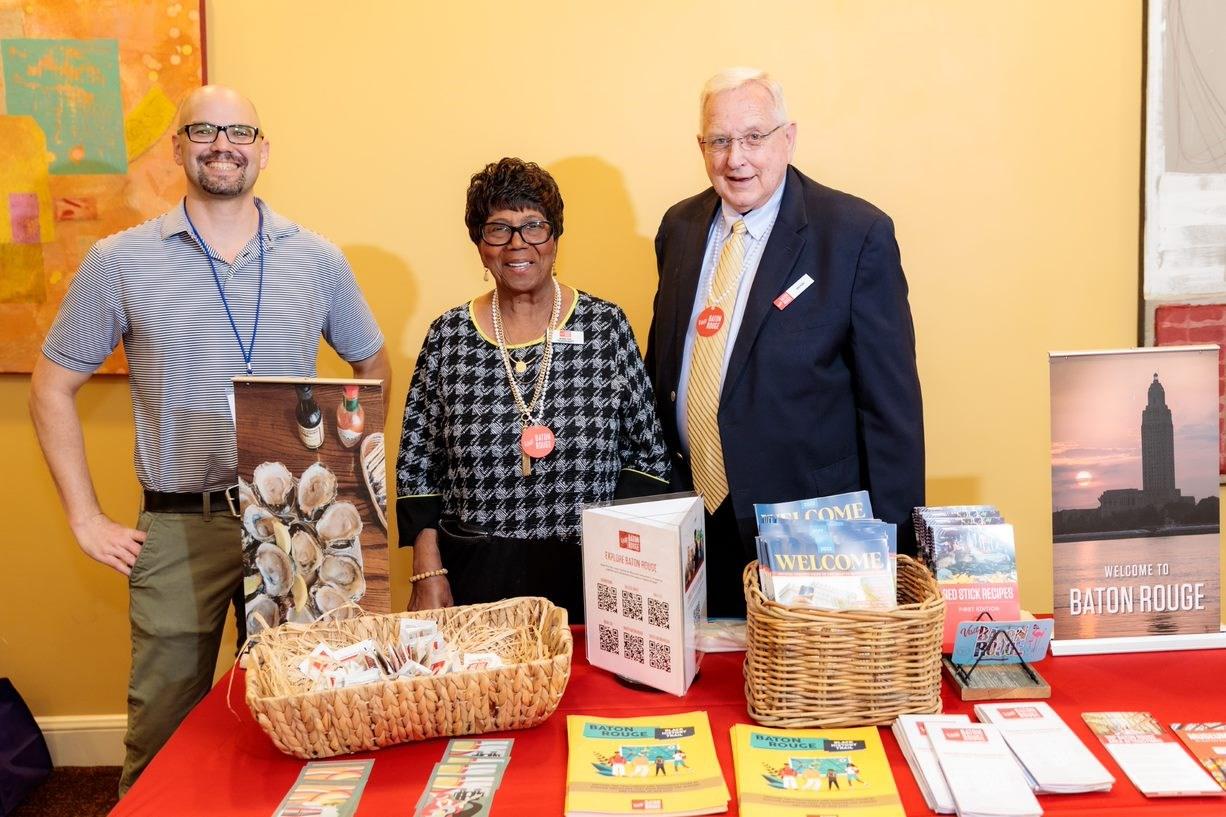
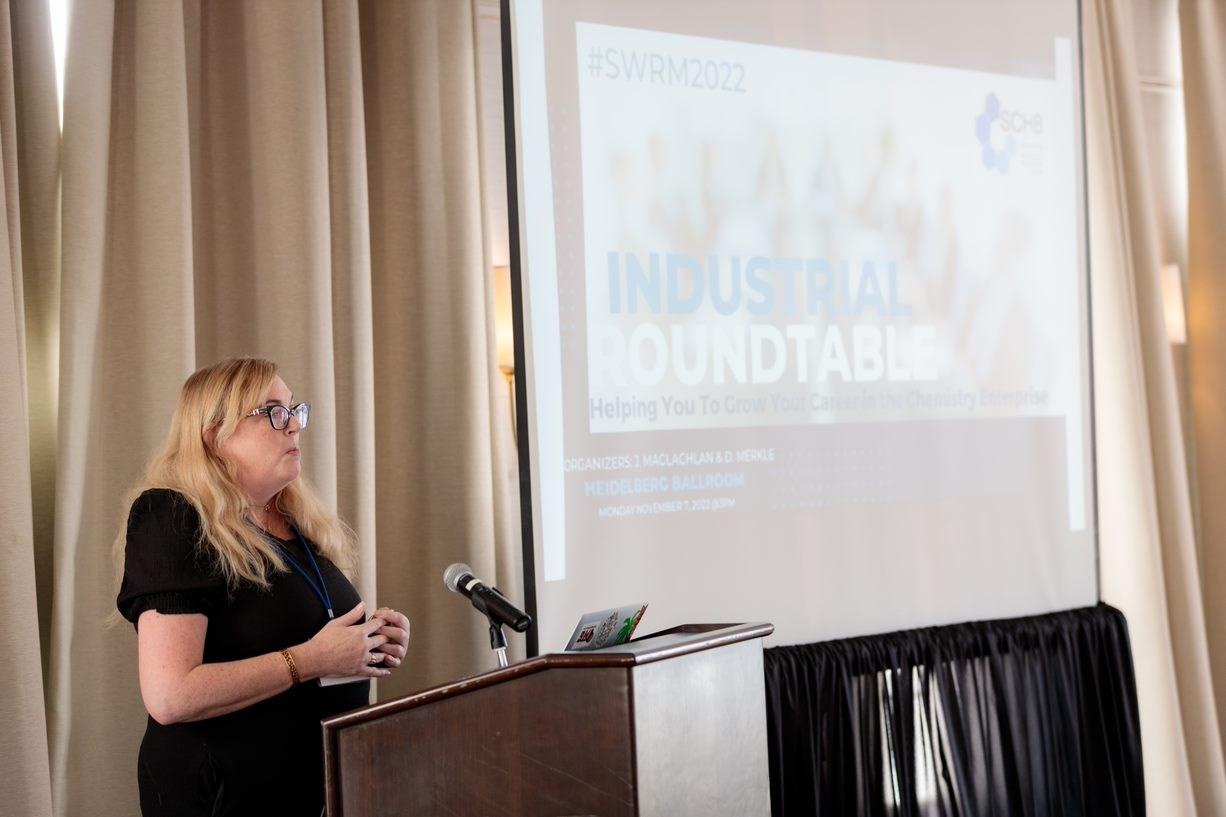
January 2023 The Southwest RETORT 8
''Transformative Chemistry and November 6 Baton Rouge,
Regional Meeting
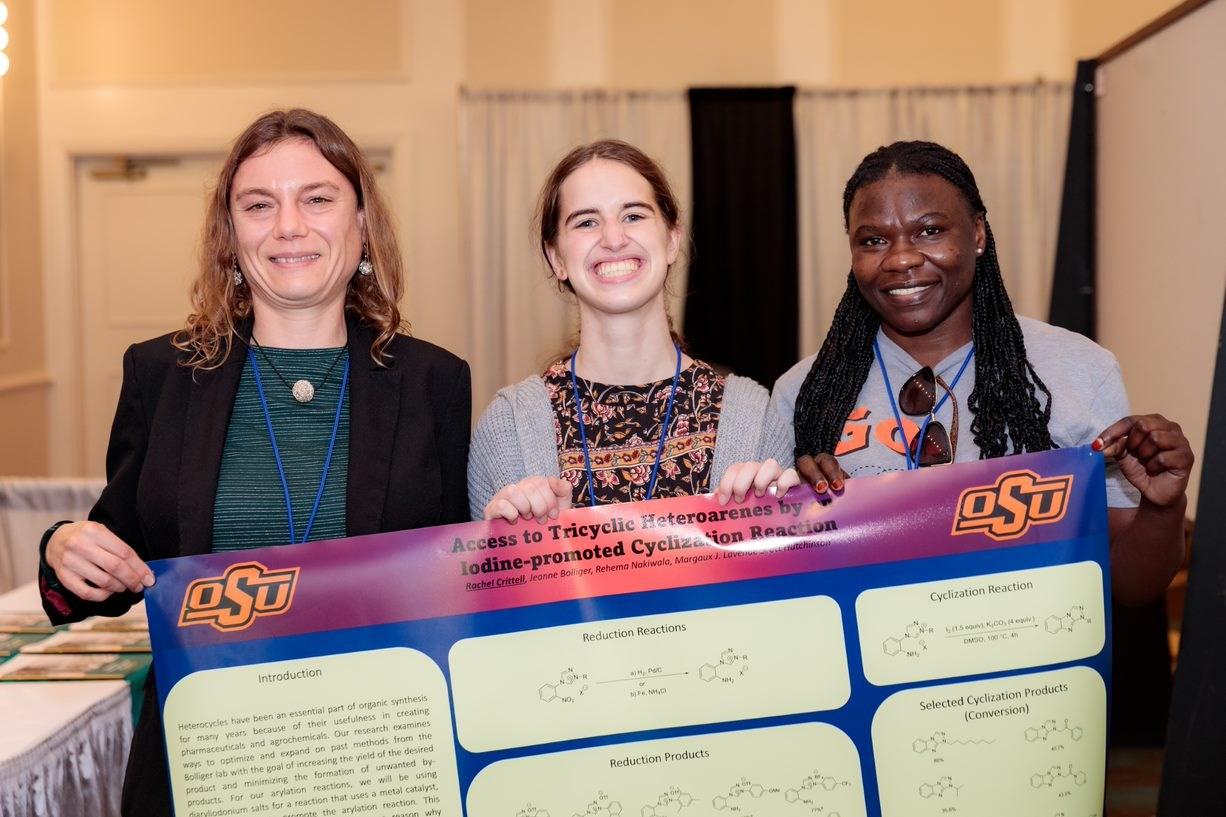


Energy in the Gulf South"

6-9, 2022 Rouge, LA
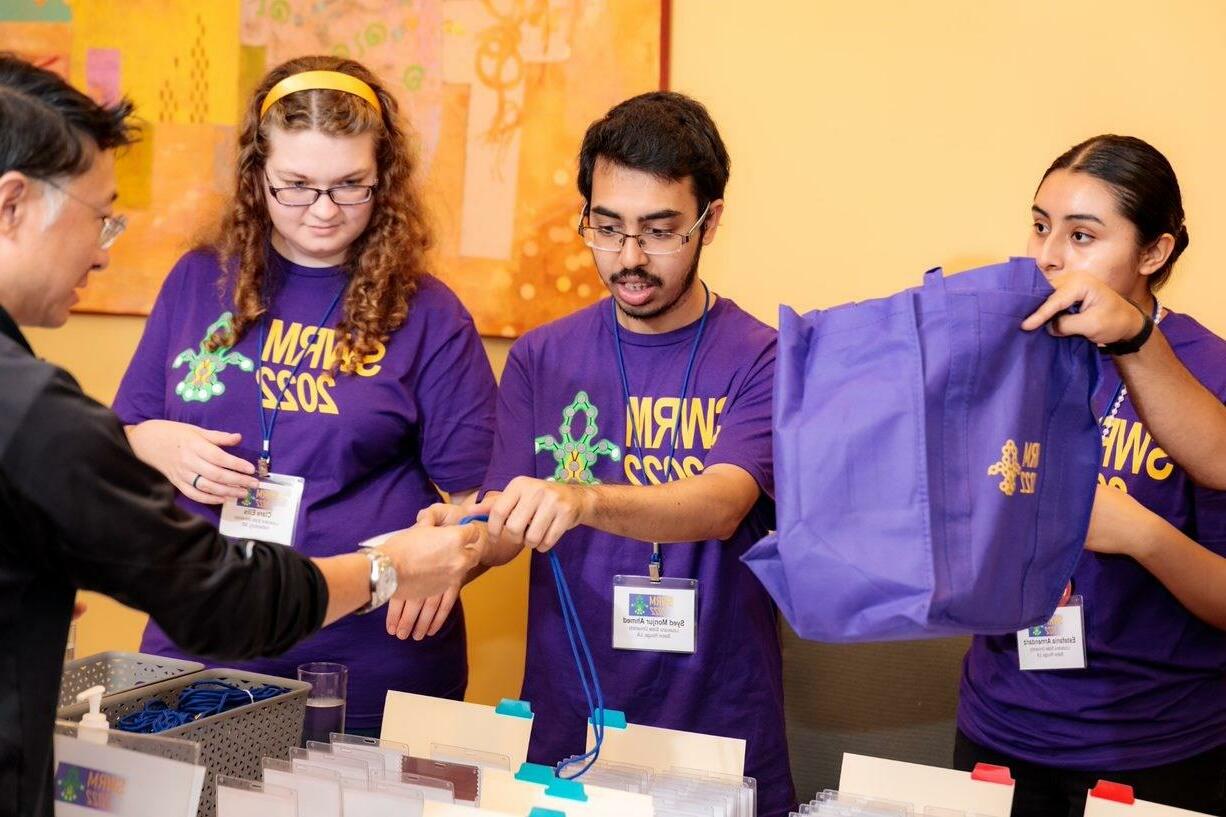
January 2023 The Southwest RETORT 9
2022 Southwest Regional Meeting
''Transformative Chemistry and Energy in the Gulf South"

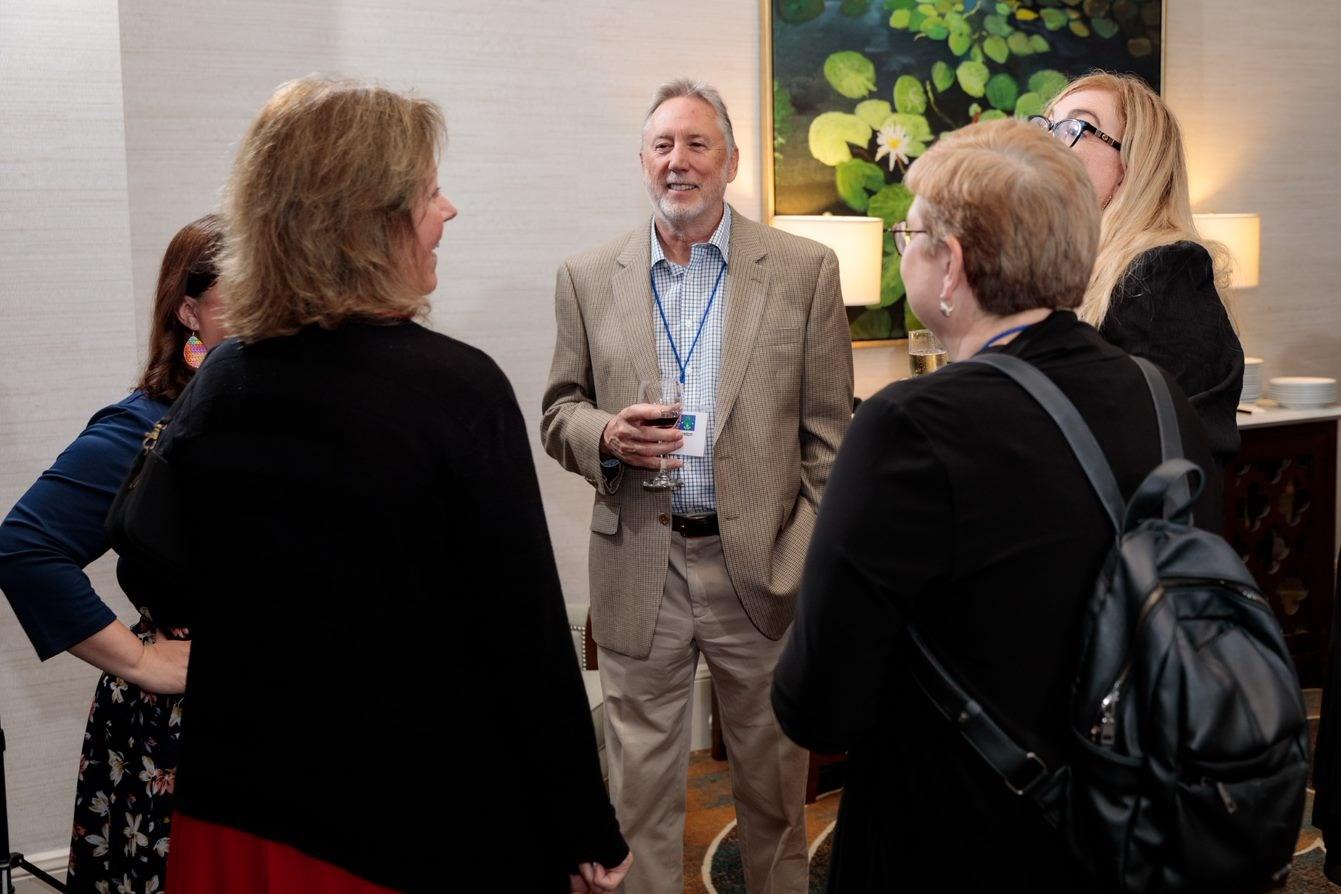

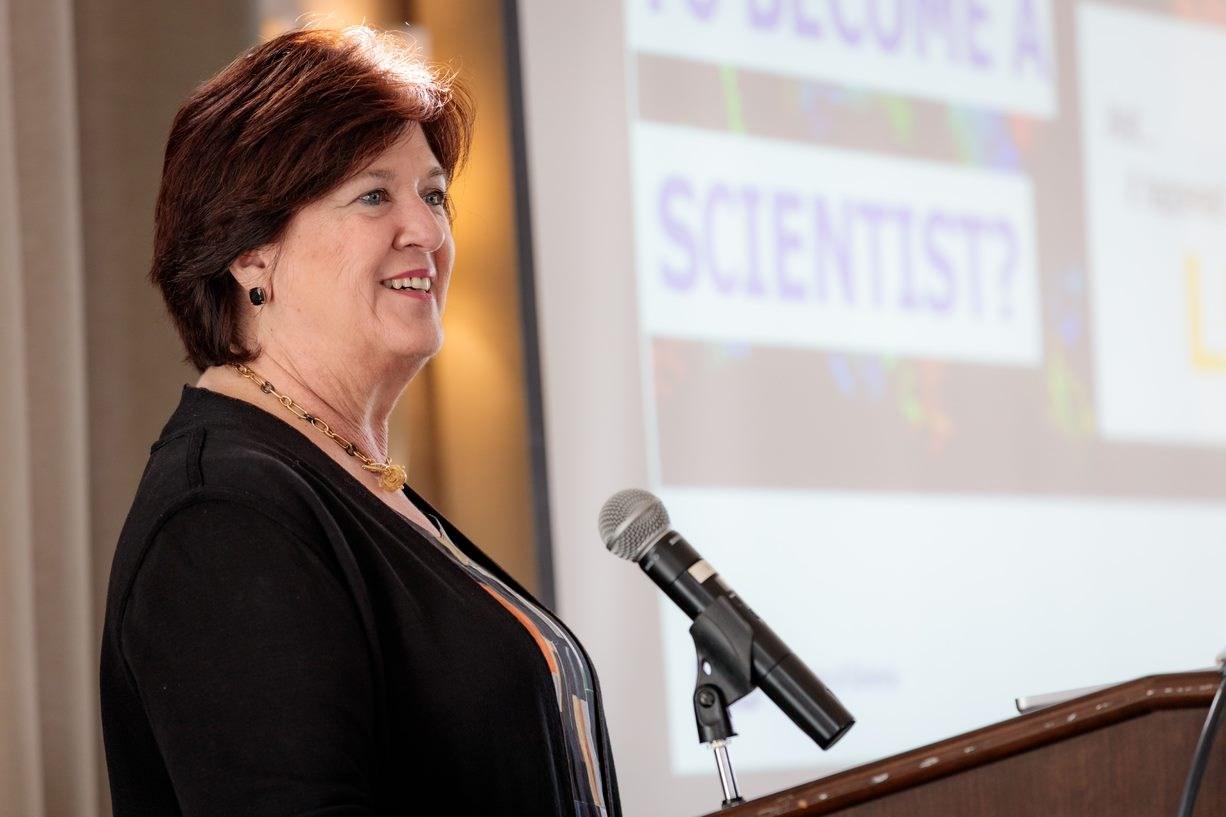

November 6-9, 2022 Baton Rouge, LA
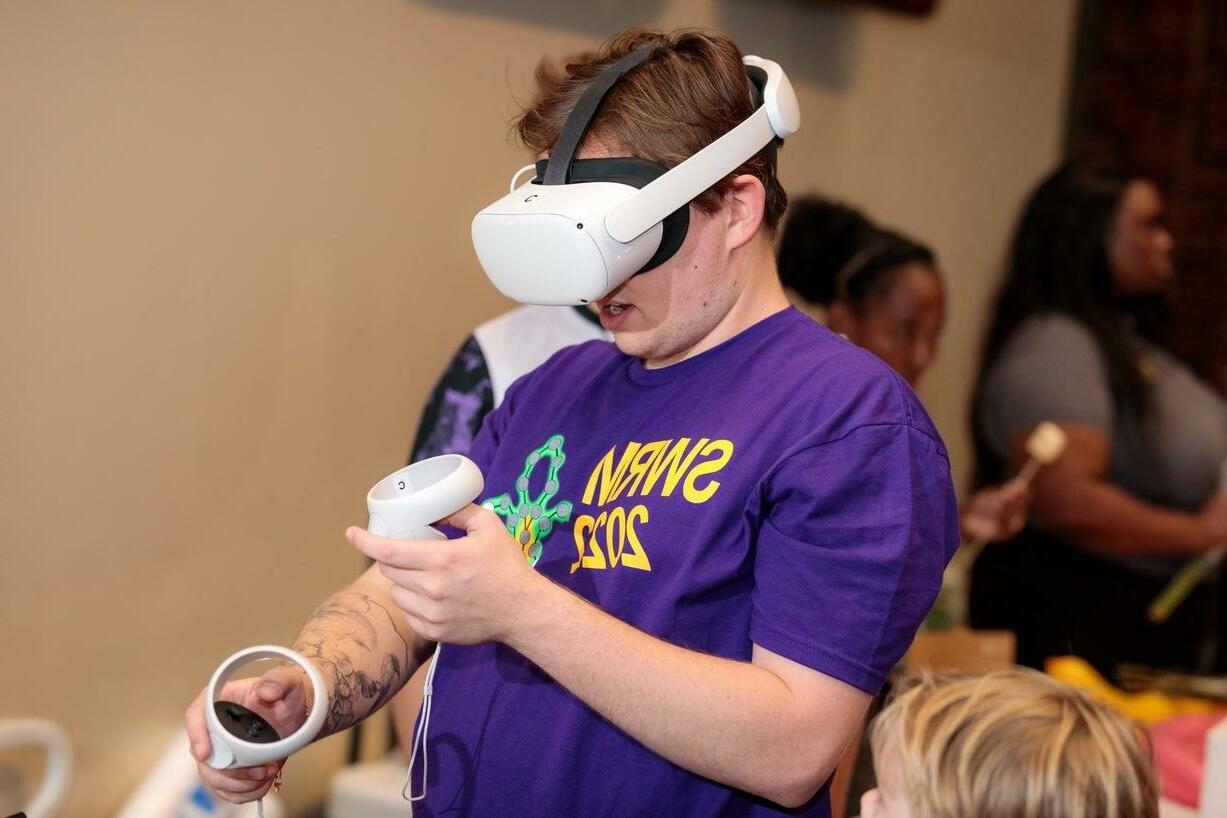
January 2023 The Southwest RETORT 10






January 2023 The Southwest RETORT 11
Tarleton State University is pleased to announce that we will be hosting the 55th Annual Meeting-in-Miniature, Dallas/Ft. Worth Local Section of the American Chemical Society, on Saturday, April 22, 2023, at the Stephenville Campus. Please mark your calendars, and we look forward to seeing you here. Registration announcements will be posted in the Southwest Retort.
55th Meeting-in-Miniature to be at Tarleton State University April 22, 2023
From the ACS Press Room
Blue light might be bad for humans but good for mangoes
“Blue Light Simultaneously Induces Peel Anthocyanin Biosynthesis and Flesh Carotenoid/Sucrose Biosynthesis in Mango Fruit”
Journal of Agricultural and Food Chemistry
We’re often told to limit our “screen time,” thanks in part to the harsh blue light that screens can emit. Plants can detect blue light too, but instead of causing sleepless nights for our green friends, it could help make their fruits taste better. Researchers now report in ACS’ Journal of Agricultural and Food Chemistry that mangoes can become redder, sweeter and more ripe when exposed to blue light over several days.
light affects the flesh. Plus, sunlight contains many colors, so different wavelengths could have different effects. So, Yuanwen Teng and colleagues wanted to investigate how blue light impacts the quality and ripeness of mangoes.

Mangoes exposed to blue light over several days were redder and sweeter (top) than those placed in the dark (bottom).
Credit: Adapted from the Journal of Agricultural and Food Chemistry, 2022, DOI: 10.1021/ acs.jafc.2c07137
Plants rely on sunlight to carry out photosynthesis and ripen their fruits. Studies have shown that exposure to light can affect the appearance of some fruits’ peels and can increase the amount of sugar and pigments in fruits such as tomatoes, which contain chlorophyll throughout their flesh. However, other fruits such as mangoes only contain this pigment in their thick peels, which could change how
To understand this phenomenon, the researchers placed a group of mangoes in blue light and another group in darkness for nine days. They found that mangoes in blue light contained far more anthocyanins in their peels, making them redder than those left in the dark. The flesh of these mangoes was also softer, sweeter and more yellow, and had more sucrose and carotenoids than the other group. In further tests, the team found that light-responsive genes involved in the photosynthesis pathway, as well as key genes involved in producing sucrose, anthocyanin and carotenoids, were upregulated under blue light. This meant that the mangoes could directly perceive this light and trigger an internal genetic signaling pathway, say the researchers. The effect was more pronounced in the peel than in the flesh, indicating that the blue light did not penetrate much past the skin. The researchers say that this work could help shed light on the complex relationship behind colored light and the internal quality of fruit.
The researchers acknowledge funding from the Key Research and Developmental Program of Hainan Province and the Fundamental Research Funds for the Central Universities.
January 2023 The Southwest RETORT 12

January 2023 The Southwest RETORT 13
From the ACS Press Room
A deep red, cranberry-tinted lipstick that’s also antimicrobial
“Antimicrobial Lipstick: Bio-based Composition against Viruses, Bacteria, and Fungi”
ACS Applied Materials & Interfaces
Lipstick can be a confidence booster, enhance a costume and keep lips from chapping. But sharing a tube with a friend or family member can also spread infections. To develop a version with antimicrobial properties, researchers reporting in ACS Applied Materials & Interfaces have added cranberry extract to the formulation. Their deep red cream quickly inactivates disease-causing viruses, bacteria and a fungus that come in contact with it.
According to historians, people in ancient Egypt were the first to use make-up, applying pastes made from minerals and other substances in their environment. The formulations have evolved over the centuries, but now researchers have come full circle, looking again toward natural ingredients. For example, recent studies have reported that lipstick formulas incorporating natural colorants, such as red dragon fruit, can result in products with both vibrant colors and antimicrobial activity. And previously, cranberry extract has been shown to inactivate viruses, bacteria and fungi. So, Ángel Serrano-Aroca and colleagues wanted to use cranberry extract to create a deep red lip tint with antimicrobial properties.
The research team mixed cranberry extract
into a lipstick cream base, which contained shea butter, vitamin E, provitamin B5, babassu oil and avocado oil. In experiments, the reddened cream was added to cultures containing different viruses, bacteria and one

Adding cranberry extract to a lipstick cream allowed it to fight off viruses, bacteria and a type of fungus.
Credit: Adapted from ACS Applied Materials & Interfaces 2022, DOI: 10.1021/acsami.2c19460
fungal species. Both enveloped and nonenveloped virus types were completely inactivated within a minute of contact with the cranberry-containing cream. And the multidrug-resistant bacteria, mycobacteria and fungus were substantially inactivated within five hours of applying the cream. The researchers suggest that their novel lipstick formula could offer protection against a variety of disease-causing microorganisms.
The authors acknowledge funding from the Fundación Universidad Católica de Valencia San Vicente Mártir and the Spanish Ministry of Science and Innovation.
January 2023 The Southwest RETORT 14
From
the ACS Press Room
Meteorites plus gamma rays could have given Earth the building blocks for life

“Gamma-Ray-Induced Amino Acid Formation in Aqueous Small Bodies in the Early Solar System”
ACS Central Science
Even as detailed images of distant galaxies from the James Webb Space Telescope show us more of the greater universe, scientists still disagree about how life began here on Earth. One hypothesis is that meteorites delivered amino acids life’s building blocks to our planet. Now, researchers reporting in ACS Central Science have experimentally shown that amino acids could have formed in these early meteorites from reactions driven by gamma rays produced inside the space rocks.
Ever since Earth was a newly formed, sterile planet, meteorites have been hurtling through the atmosphere at high speeds toward its surface. If the initial space debris had included carbonaceous chondrites a class of meteorite whose members contain significant amounts of water and small molecules, such as amino acids then it could have contributed to the evolution of life on Earth. However, the source of amino acids in meteorites has been hard to pinpoint. In previous lab experiments, Yoko Kebukawa and colleagues showed that reactions between simple molecules, such as ammonia and formaldehyde, can synthesize amino acids and other macromolecules, but liquid water and heat are required. Radioactive elements, such
as aluminum-26 (26Al) which is known to have existed in early carbonaceous chondrites release gamma rays, a form of high -energy radiation, when they decay. This process could have provided the heat needed to make biomolecules. So, Kebukawa and a new team wanted to see whether radiation could have contributed to the formation of amino acids in early meteorites.
Credit: abriendomundo/Shutterstock.com
The researchers dissolved formaldehyde and ammonia in water, sealed the solution in glass tubes and then irradiated the tubes with high-energy gamma rays produced from the decay of cobalt-60. They found that the production of α-amino acids, such as alanine, glycine, α-aminobutyric acid and glutamic acid, and β-amino acids, such as β-alanine and β-aminoisobutyric acid, rose in the irra-
January 2023 The Southwest RETORT 15
The building blocks of life, amino acids, could have been formed in early meteorites, such as the one shown here.
Continued
on page 17
Around the Area
Tarleton State University

Tarleton State University is proud to introduce three new chemistry faculty members.
Dr. Mary Fennimore is from Silverton, Oregon and received her Bachelor of Science in Chemistry from the University of Portland in Portland, Oregon. She then received her PhD in Organic Chemistry from the University of Nevada, Reno in Reno, Nevada. Currently, Dr. Fennimore serves as an Organic Chemistry Instructor and Lab Coordinator at Tarleton.
Dr Celyna Rackov holds a PhD degree in Chemical Engineering from the University of Sao Paulo in Sao Paulo, Brazil, which included completion of a fellowship program at the University of Texas, at Arlington. Prior to joining the Chemistry program at Tarleton, Dr Rackov taught at Dickinson State University in Dickinson, North Dakota, Dallas College, and Collin College in Plano. Dr. Rackov is passionate about Environmental Chemistry, Analytical Chemistry and Chemistry Education and continues to be involved with several Chemistry research studies taking place in Brazil.
ence in chemistry education, with 6 of those years teaching various types of chemistry courses at the high school level in California and Texas. In addition to her teaching duties, she serves as Coordinator of the Introductory Chemistry Labs. UT Dallas
50years - Chemistry and Biochemistry | The University of Texas at Dallas
The Department of Chemistry and Biochemistry at the University of Texas at Dallas will celebrate its 50 th anniversary on January 13-14, 2023.It is our great pleasure to invite undergraduate and graduate alums of our Chemistry program to join us in celebrating 50 years of activity.
(https://chemistry.utdallas.edu/50years/)

Dr. Melissa Williams is from Los Angeles, CA. She completed her B.S. in Chemistry at the University of California, Riverside, and her PhD in Chemistry at the University of Southern California, before utilizing her background in organic chemistry to work in the pharmaceutical industry for two years. Dr. Williams has 7 years of experi-
One special invited speaker will be Professor Richard D. McCullough (President of Florida State University), an alumnus who worked with Professor John P. Ferraris. Other invited speakers tentatively scheduled to talk include UTD President Richard Benson, Past UTD President David Daniel, Provost Inga Musselman, Professor Emeritus Dean Sherry and Richard Caldwell, Professor John Ferraris, and Welch Chairs Vlad Gevorgyan and Ray Baughman. Abanquet dinner is scheduled for the evening of Friday, January 13.
January 2023 The Southwest RETORT 16
From the ACS Press Room continued
“Insulin Tablet”
Continued from page 5
insulin toward the colon’s lining to be absorbed. The team also tested their minitablets in rats and found that they could significantly reduce the animals’ blood glucose levels for over five hours. In fact, they could maintain a glucose level almost as low as injection-delivered insulin. Though more work is needed, the researchers say that this is a concrete step toward creating more oral formulations of traditionally injection-only medications.
The authors acknowledge funding from the National Natural Science Foundation of China, the Guangdong Basic and Applied Basic Research Foundation and the Key Research and Development Project of Lishui.
“

Silk Worm”
Continued from page 7
on a person’s skin to create an instant, custom bandage. These bandage fibers also contained an antibiotic, which successfully inhibited bacterial growth. The researchers say that this work could open up new possibilities for future biomedical applications of nanofibers.
The authors acknowledge funding from the National Natural Science Foundation of China and the Fundamental Research Funds for the Central Universities.
“Meteorites”
Continued from page 15
diated solutions as the total gamma-ray dose increased. Based on these results and the expected gamma ray dose from the decay of 26Al in meteorites, the researchers estimated that it would have taken between 1,000 and 100,000 years to produce the amount of alanine and β-alanine found in the Murchison meteorite, which landed in Australia in 1969. This study provides evidence that gamma ray-catalyzed reactions can produce amino acids, possibly contributing to the origin of life on Earth, the researchers say.
The authors acknowledge funding from the Japan Society for the Promotion of Science KAKENHI.
January 2023 The Southwest RETORT 17
From the Editor

Worm spit? Really? Yep, silk comes from the slimy spit of silkworms. Yu Wang, Wei Yang, Xuewei Fu and colleagues designed an apparatus for spinning microfibers based on the way silkworms bob their heads while spinning cocoons. It’s something to think about the next time you buy an expensive silk scarf.
My favorite photo from the Baton Rouge SWRM? The pan of beignets at the welcome reception: they weren’t quite up to Café du Monde quality, but hey…
Good news: the 55th Meeting-in-Miniature will be at Tarleton State in April as an inperson meeting!

January 2023 The Southwest RETORT 18














































